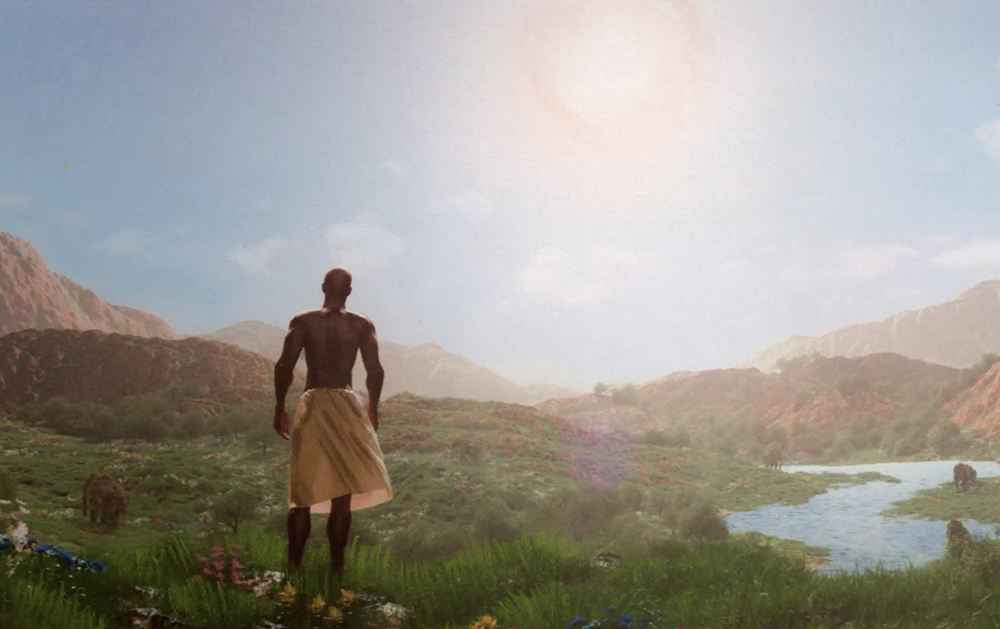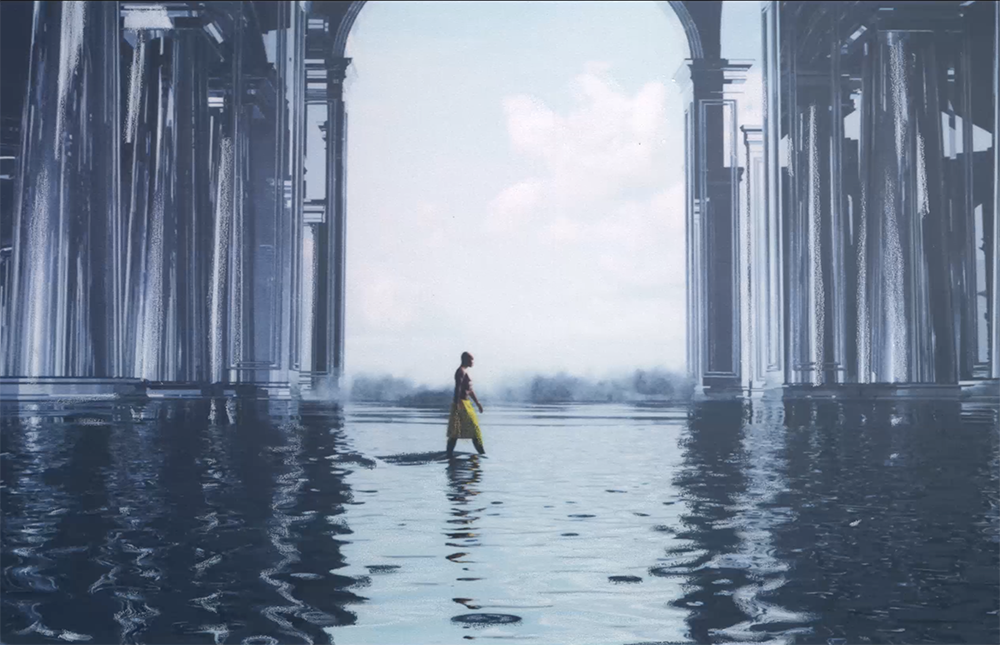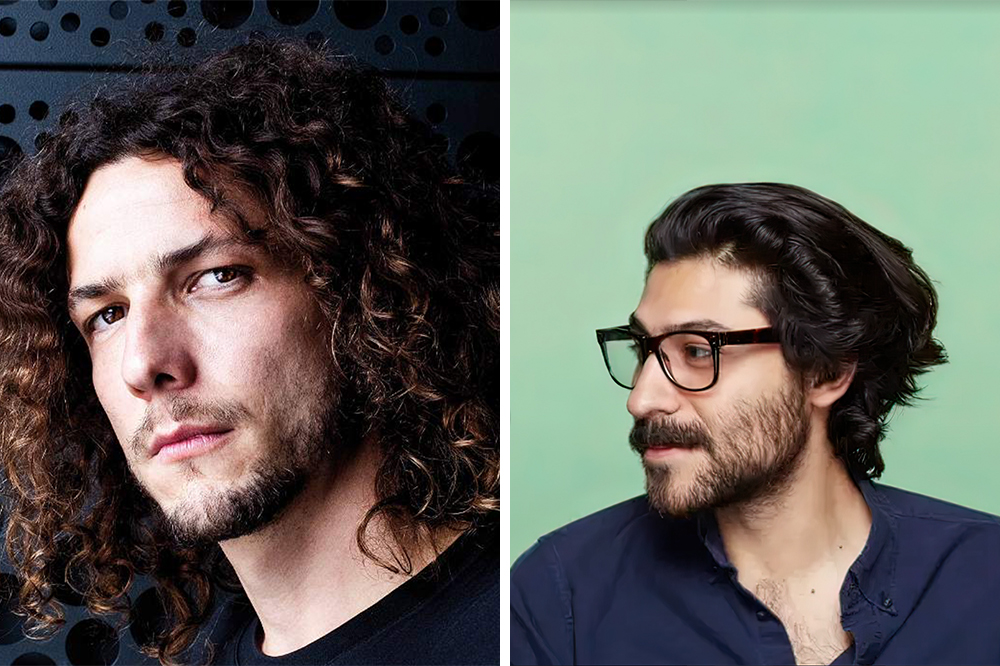With a portfolio comprising of working with greats such as U2, Thom Yorke, and most recently with singer Mitski for the music video of “A Pearl” (which generated quite the buzz after fetching a Special Jury Recognition Award for Animation at the 2020 SXSW competition), New York-based visual artistes and animators Santiago Carrasquilla and Jos Diaz Contreras are certainly on a roll.
The duo also heads their own studio ‘Art Camp’ based out of Brooklyn. They have had the pleasure of being featured in prestigious publications such as Wired, Rolling Stone, NPR, It’s Nice That, Adweek, with their work recognized by the Art Directors Club, the D&AD Awards, and Vimeo’s Staff Picks
In this interview, they speak in length about their respective artistic journeys and the painstaking-but-overall enriching and creative process behind their short film “Awakening: The First Day.” They speak about how adapting a stage show to the screen challenged them, as well as collaborating with an international team. The duo weaved both digital and traditional animation techniques, and recently bagged the ‘Best Experimental Short’ award at Montreal’s prestigious ‘Animaze’ festival.
Vidal D’Costa for The Movie Buff: What drew you both to the field of visual arts and animation, or in pursuing a career in the same?
Santiago Carrasquilla: I remember wanting to be an artist since very young. One of my earliest memories is asking my mom to take me to the art store to buy a canvas and paints so that I could make a painting. I was about seven and still living in Colombia. I remember later gifting that painting to my best friend’s father who is a great artist. I’ve always been obsessed with making things.
I think all children are but with age, we can often lose that thread. I mostly played music in my teens but then found the visual arts again almost by miracle when I was 17. But as soon as that happened, it was immediately clear to me that was the path and I’ve never thought twice. Sixteen years later and I’m still waking up with that same burning desire to make things, to make real and tangible the things in my imagination.
Jos Diaz Contreras: I discovered animation through traditional filmmaking. An opportunity came up for Art Camp to create an animated music video, and though none of us had ever made anything remotely similar we seized the challenge. By the time we finished that piece I was in love with the format. I have always been most drawn to the scenes in films that work without dialogue, as pure visual storytelling, and animation lends itself in creating the kinds of cinematic experiences that extend right beyond the edge of conscious thought, and that impact/touch you on a deep and sometimes even physical level.
I received a screener for “Awakening: The First Day” earlier on, and must admit the visuals were simply ethereal. Could you shed some light on the complexities of the animation process? I’m especially kin to know what sets the technique that’s used in this short (combining 3-D animation finished with a hand-painted layer) apart from other animation techniques?

SC: We make everything using various 3D softwares (Cinema 4D, Houdini, Redshift, Marvelous, Z-Brush). We then print everything using ink jet printers, and then transform those prints by directly drawing on top of those prints. This all happens at 10fps so the total amount of frames that were printed and drawn over in this film is about 3k. On one hand, we have access to the most advanced technology available today to tell the stories. On the other hand we affect those highly contemporary images using traditional methods, resulting in what we always hope to be something like a moving painting.
JOS: I think what really sets the work apart is the truly humbling level of talent and dedication from every member of the team, from old friends we’ve worked with over and over through the years to artists we collaborated with for the first time on this film. Nothing in animation is an accident—from every fold of a fabric to the way the light shines through the leaves, what you are seeing is essentially a sculpture, a painting, something crafted with painstaking care.
This film would already work beautifully as just a 3D animation, but then illustrating every frame brings it into a different world of feeling. Even though you only see any individual illustration for a fraction of a second, you can feel the artists’ hand, their presence, and that makes it personal. Endless thanks and respect to Britton Korbel, Nick Appel, Camila Amorocho and everyone on the illustration team.
Also, considering that “The First Day” is an adaptation of a stage show, were there any challenges and setbacks? Was it difficult to translate its stage elements to the big screen or in adapting it to the animated medium/format? If so, how were they navigated?
JOS: The process of creating something new within the existing world of the show was new for us but also very natural. Everything started with the script. When Tom and Troy, the producers, first reached out, the show was still in rehearsals and pre-production. We had some test stills and concept art to work off of, but we were mostly drawing from the stage script by Kelly Sue and the world she created on the page.
With characters like Light and Darkness, settings like a realm of fire or a city of air, the visual elements we would be exploring were very solid from the beginning. And by working in animation we had the freedom to imagine this world as fully real and immersive—the scale and scope of the sea, the terrain of a newly formed earth, the impossible architecture of a city in the sky. When the show premiered, finally seeing the luminous stage direction by Baz Halpin gave us endless elements and ideas to bring back and weave into our film.
Are there any more such exciting collaborations or creative endeavors that our readers can look forward to in the future? Going forward, are there any particular animation techniques or mediums that you are yet to experiment with?

SC: I’m really excited about the intersection of CG, AI, and fashion. I think it’s new, rich territory to explore and we’ve been making work and experiments. We’ve recently launched a big campaign for the fashion brand TELFAR and that was really interesting to work on. We did a big motion capture shoot where we let a group of actors improvise monologues. We captured the audio as well as their movements very precisely and we rendered very high resolution, nearly hyper real simulated clothes. The result was surprising. A very human centered shoot (improvisations by real people) but then translated into this highly digital world.
JOS: Many more to come! My next animation project is a collaboration with the philosopher Tobias Rees, exploring the ideas and aesthetics of artificial intelligence.
Wishing you both and the team behind this short a whole lot of success. On a parting note, are there any words of wisdom that you’d care to impart to students of animation/visual arts who are passionate about pursuing a career in this field?
SC: Do you love making things regardless of their measurable results? We’ve made so much work that no one has seen, or very few. We did it because we love creating things, we love the craft, the difficulty and the feeling of getting better at it each time.
I’m really excited about the intersection of CG, AI, and fashion.” santiago carrasquilla
This is not an easy path to take, the work never ends, everything can always be better, but at the same time it is rewarding in a deep sense as well as magical. Magical in that we can see things in our mind, things appear in our imagination, and we can dowhat we can to try to visualize these, materialize these mind visions. And that’s quite fantastic. And to do this in collaboration with other humans, other minds, and to end up with an ‘audio/visual symbol’ that represents so many people’s ideas, imaginations, hard work, love, dedication… is just a very beautiful way to spend life. As the wise saying goes: “We Are All One.”
JOS: I’m not sure it’s advice, but It’s important to mention how important our producers Angela Foster, Tom Pellegrini and Troy Underwood were in bringing this film to life. Truly impossible without them. OK the advice: seek out good producers, your life will be much better for it!
While our interview comes to a close here, you can keep track of the duo, their ongoing creative ventures in the field of visual arts, plus all things ‘Art Camp’, via their socials: https://www.instagram.com/madeatartcamp/.


